
Introduction
German and Wendish immigrants first settled at Westgarthtown in March 1850. Most had arrived in Australia the previous month, aboard the ship Pribislaw, after a six-month journey from Hamburg. They were among five million emigrants who left Germany during the nineteenth century, mainly for economic reasons, with most settling in North America. Westgarthtown’s settlers came from Mecklenburg, Saxony and Silesia.
Read about:
- German immigration
- William Westgarth
- Migrant ships
- Wends
- Establishment
- Church, school & cemetery
- Dairying
- Subdivision
German Migration to Australia
Although several thousand Germans had settled in South Australia by the late 1840s, few arrived in Victoria (then the Port Phillip District of New South Wales) before 1849. In fact, had it not been for the efforts of one man – William Westgarth – it is probable no German migration direct to Victoria would have taken place until after the discovery of gold in 1851, the news of which drew large numbers of people from all around the world. Further general information about German migration to Australia can be found at Dave Nutting's website German Australia.
William Westgarth and Westgarthtown
 William
Westgarth (1815-1889), a prominent Melbourne merchant, actively promoted
German migration to Victoria, having observed the ‘industry, frugality,
sobriety and general good conduct’ of Germans in South Australia.
While on a visit to Europe during 1847/48 he travelled to Germany where
he encouraged prospective emigrants to consider Melbourne as a destination.
While in London he persuaded the British Government to offer a bounty to
assist them to travel here.
William
Westgarth (1815-1889), a prominent Melbourne merchant, actively promoted
German migration to Victoria, having observed the ‘industry, frugality,
sobriety and general good conduct’ of Germans in South Australia.
While on a visit to Europe during 1847/48 he travelled to Germany where
he encouraged prospective emigrants to consider Melbourne as a destination.
While in London he persuaded the British Government to offer a bounty to
assist them to travel here.
Westgarth also provided assistance to Germans immigrants to Victoria after their arrival. An enduring achievement was the establishment of a German settlement at Thomastown, sixteen kilometres north of Melbourne. This settlement soon became known as Westgarthtown.
Pribislaw and other German ships
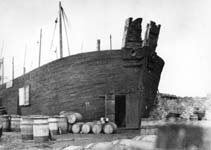 The
Pribislaw, which arrived in Melbourne on 2 February 1850, brought half
the original Germans and Wends who settled at Westgarthtown – the
Franke, Graff, Karsten, Maltzahn, Peters, Rosel, Winter, Wuchatsch, Ziebell
and Zimmer families. Other settlers arrived aboard the Godeffroy (Gruenberg,
Heyne, Knobloch and Wehner), Dockenhuden (Kawerau and Wanke) and Emmy (Siebel)
in 1849 and the Alfred (Groening and Timm), which arrived in February 1850.
The
Pribislaw, which arrived in Melbourne on 2 February 1850, brought half
the original Germans and Wends who settled at Westgarthtown – the
Franke, Graff, Karsten, Maltzahn, Peters, Rosel, Winter, Wuchatsch, Ziebell
and Zimmer families. Other settlers arrived aboard the Godeffroy (Gruenberg,
Heyne, Knobloch and Wehner), Dockenhuden (Kawerau and Wanke) and Emmy (Siebel)
in 1849 and the Alfred (Groening and Timm), which arrived in February 1850.
Wends
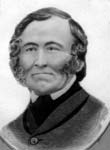
The Graff, Rosel, Wuchatsch and Zimmer families were of Wendish (also known as Sorbian) origin. The Wends are a Slavic race, the smallest of Europe’s eleven Slavonic nations, whose homeland is Lusatia, a predominantly rural region in eastern Saxony and southern Brandenburg, south-east of Berlin. Signposts in Lusatia carry both Wendish and German names and the Wendish language, history, literature, folklore and culture are taught in many schools in Saxony and Brandenburg.
Further information is available at the website of the
Wendish Heritage Society of Australia
Establishment of Westgarthtown
In March 1850, William Westgarth and Captain John Stanley Carr, an Irishman of 25 years residence in Germany, purchased Section 25, Parish of Keelbundora, 16 kilometres north of Melbourne. The 640 acre section, which now forms part of the suburbs of Thomastown and Lalor, cost £1 per acre.
The names of those Germans and Wends who purchased land from Westgarth and Carr are included in Table 1, along with their dates of naturalisation and formal land purchase, price paid and acreage received.
Ten acres were reserved for a church, cemetery, school and shops. Figure 1 shows the central location of this reserve, along with the landholdings of the settlers. In the sale of lots, each settler received a creek frontage, to ensure availability of water. As the creek was not always reliable – it soon became known as the Dry Creek – legal access to a spring in the north of the section was provided.
As well as those Germans and Wends who settled at Westgarthtown, others who arrived from 1849-51 settled at Germantown (Grovedale) near Geelong, at Hawthorn, Richmond, Collingwood, Northcote, Brunswick, Mill Park and Greensborough, or dispersed about the Port Phillip District among the Anglo-Celtic population. In 1853, German settlements were also established at Doncaster, Harkaway and in the Western District near Hamilton.
Establishment of Lutheran Church, School and Cemetery
In 1855 a Lutheran school opened in the still-to-be completed bluestone Lutheran church. The church was dedicated in 1856 and is now the second oldest Lutheran Church building in Australia. For over 100 years, the church served as a unifying force and focal point for Westgarthtown's activities. All major social events were centred around the Lutheran Church. As well as religious festivals such as Christmas, Easter and Harvest Festival, celebrations and feasts associated with baptisms, confirmations and weddings were frequent, particularly in the early days, when there were many young families.
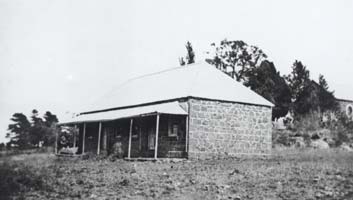 The Lutheran school operated from 1855-76. It was officially known as New Mecklenburg, reflecting the origins of many of the settlers. The school operated in the church from 1855-66, when a separate purpose-built building (pictured) was constructed nearby. This building was demolished during the 1950s.
The Lutheran school operated from 1855-76. It was officially known as New Mecklenburg, reflecting the origins of many of the settlers. The school operated in the church from 1855-66, when a separate purpose-built building (pictured) was constructed nearby. This building was demolished during the 1950s.
When the settlement was established in 1850, the area was known as Keelbundora, after the parish in which it was located. From 1851 the name Dry Creek came into use and predominated for several years. The school’s name was also used to describe the area for a few years, but by 1860 the name Westgarthtown, in use from about 1856, was finally adopted. To further confuse the matter, the name Germantown was also used, mainly by outsiders.
In about 1900 the church's name was changed to Thomastown Lutheran Church, partly to avoid confusion with the area in Northcote around the Westgarth railway station. Thomastown is now Australia’s oldest operating Lutheran church. The only older Lutheran church building is at Lobethal in the Adelaide Hills. Dedicated in 1845, Lobethal’s original brick church now only serves as a chapel beside a larger, more modern building.
The cemetery, in which about 200 people have been buried, remains open for members of the congregation and descendants of original settlers. For further information about the cemetery including a reconstructed burial list visit our cemetery minisite.
- Westgarthtown cemetery minisite
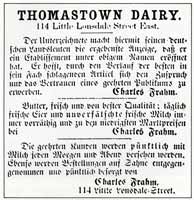 Dairying
Dairying
Dairying was carried on at Westgarthtown from 1850-1972. Farming was initially on a subsistence basis, but during the 1850s gold rushes, the settlers began to produce dairy products, hay, chaff, vegetables, fruit and eggs for sale on a commercial basis. Melbourne was the main market. The proceeds from these early sales of produce, however, were only realised after tiring return journeys to Melbourne, often on foot, over primitive roads in all kinds of weather.
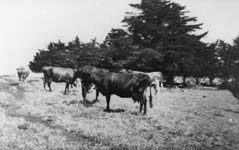 By 1860, dairying had emerged as the main
farming activity and was the mainstay of Westgarthtown’s economy
for over a century. During the 1930s, Westgarthtown’s milk was retailed
in Preston
by Albert Siebel, who in 1934 established the Pura Dairy in Murray Road.
At that time he had only one cart and delivered to a few streets. From
this small beginning Pura Milk has grown to be one of Australia’s
largest brands.
By 1860, dairying had emerged as the main
farming activity and was the mainstay of Westgarthtown’s economy
for over a century. During the 1930s, Westgarthtown’s milk was retailed
in Preston
by Albert Siebel, who in 1934 established the Pura Dairy in Murray Road.
At that time he had only one cart and delivered to a few streets. From
this small beginning Pura Milk has grown to be one of Australia’s
largest brands.
Sale and Subdivision
Since 1945 almost all of the land which formed the original Westgarthtown settlement has been sold and subdivided for residential use. During the late 1940s and 1950s Graff’s, Siebel’s and Winter’s land was built upon; in the early 1960s Nebel’s farm was subdivided; then in 1967 progress crossed Edgar’s Creek with the sale of Wuchatsch’s and Kreitling’s land. Finally, in 1972, the Ziebell and former Grutzner properties were sold and later subdivided. The only Westgarthtown land which now remains intact is the Lutheran church and cemetery reserve.
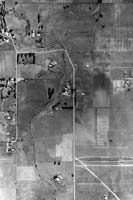
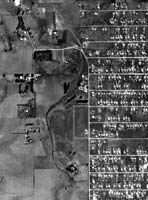
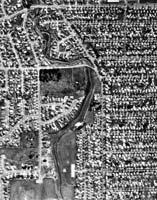
![]()